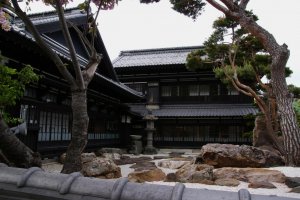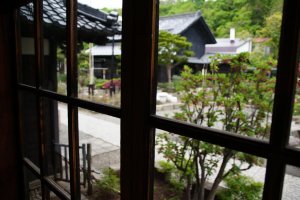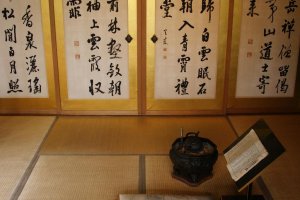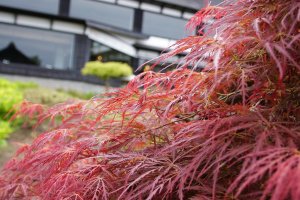One of the joys of visiting Hokkaido is that I’ve discovered yet another side to Japan. In every region, whether it’s been Niseko, Akan National Park, Kawyu-Onsen or Nemuro, there has been a pleasant surprise on almost a daily basis. While surprises and new discoveries are rewarding, there is also something to be said for the familiar and nostalgic.
After boarding a city bus in Otaru, I made my way to the Shukutsu Region of the city and disembarked a couple of stops prior to the final stop at the local aquarium. My destination was the Old Aoyama Villa and the Kihinkan Inn. I walked through a local neighborhood and up the hill past little kids on bikes that whizzed past me and shouted, “Hello!” as they giggled all the way down to their homes below.
I reached Old Aoyama Villa and couldn’t help but smile as the buildings made me feel comfortable as they evoked memories of my original visit to Japan. My arrival came with the corresponding thought, “Yes! This is Japan!” In many ways, my time in Hokkaido – as enjoyable as it’s been – has been completely devoid of the part of Japan I fell in love with in the first place. Thankfully, the villa was able to provide a stunning re-introduction into one of the facets of the country that I enjoy the most.
In the early 20th century, Otaru experienced a boom in the herring fishery industry. You could call it an aquaculture “gold-rush.” The fish were jumping into the boats which meant that exceedingly wealthy families were able to afford and construct lavish houses. In Otaru, one such example was the Aoyama family.
Designated as a historical residence, construction began in 1917. Masae, the daughter of Tomekichi and Masakichi Aoyama, inspired by a visit to the mansion of the Homma family in Sakata (Northern Honshu) at the age of 17, set about to build a similar villa with an artistic emphasis, with help from her father of course.
No expense was spared in its construction and the large building is filled with traditional calligraphy, Japanese paintings, intricate woodwork, and handcrafted roof tiles uncommon to the area.
My reassuring visit to the villa was accompanied by gracious hospitality and well-spoken English from Kihinkan’s President Yuuko Sato and her daughter Ayami. In the end, it turned out that my visit with Yuuko and Ayami evoked yet another memory of my first visits to Japan: The hospitality of friendliness of the Japanese People.
The entrance fee is ¥1000 and you should expect to spend about an hour touring the building the outdoor gardens.































